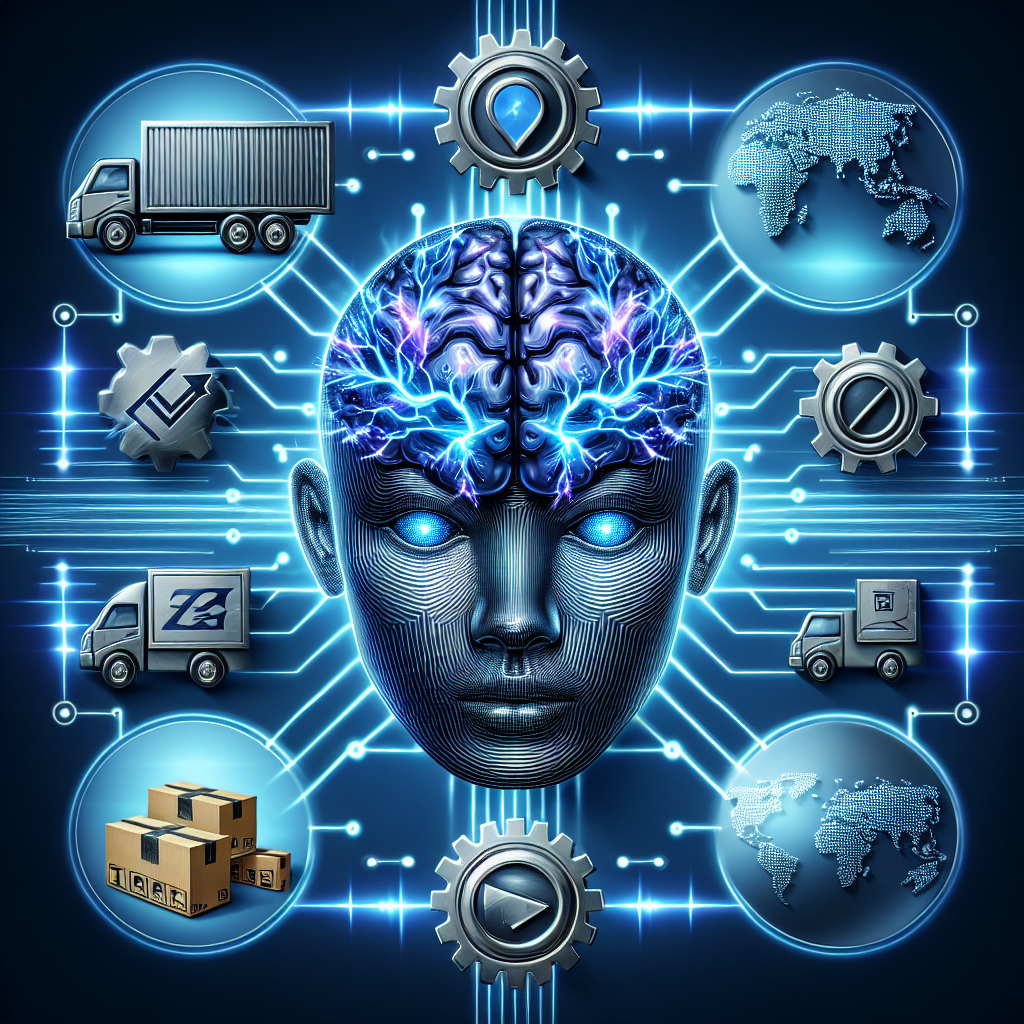In today’s fast-paced world, the demand for efficient shipping and delivery processes is higher than ever. With the rise of e-commerce and the increasing expectations of consumers for fast and reliable shipping, companies are constantly looking for ways to optimize their logistics operations. One of the most promising technologies that can help achieve this is artificial intelligence (AI).
AI has the potential to revolutionize the shipping and delivery industry by streamlining processes, reducing costs, and improving customer satisfaction. From route optimization to predictive maintenance, AI can be applied in a variety of ways to make shipping and delivery operations more efficient.
One of the key areas where AI can make a significant impact is in route optimization. By analyzing historical data on traffic patterns, weather conditions, and other factors, AI algorithms can help companies determine the most efficient routes for their deliveries. This can lead to cost savings, reduced fuel consumption, and faster delivery times.
AI can also be used to improve demand forecasting, which is crucial for ensuring that companies have the right amount of inventory at the right time. By analyzing historical sales data, as well as external factors such as weather and economic trends, AI algorithms can help companies predict demand more accurately, reducing the risk of stockouts or overstocking.
Another area where AI can be applied is in predictive maintenance. By analyzing data from sensors on vehicles and equipment, AI algorithms can help companies identify potential maintenance issues before they occur, allowing for preventive maintenance to be performed proactively. This can reduce downtime, improve the lifespan of assets, and ultimately save companies money.
In addition to these applications, AI can also be used to improve the customer experience. By analyzing data on customer preferences, shopping habits, and delivery preferences, companies can personalize the shopping and delivery experience for each customer, leading to higher customer satisfaction and loyalty.
Overall, using AI to optimize shipping and delivery processes can result in significant benefits for companies, including cost savings, improved efficiency, and better customer satisfaction. As the technology continues to advance, we can expect to see even more innovative applications of AI in the shipping and delivery industry.
FAQs:
Q: How can AI help companies optimize their shipping and delivery processes?
A: AI can help companies optimize their shipping and delivery processes in a variety of ways, including route optimization, demand forecasting, predictive maintenance, and customer experience personalization.
Q: What are some of the benefits of using AI in shipping and delivery?
A: Some of the benefits of using AI in shipping and delivery include cost savings, improved efficiency, reduced fuel consumption, faster delivery times, better customer satisfaction, and higher customer loyalty.
Q: Are there any risks or challenges associated with using AI in shipping and delivery?
A: While AI can offer significant benefits, there are also risks and challenges associated with its implementation, such as data privacy concerns, the need for skilled personnel to manage the technology, and the potential for algorithmic bias.
Q: How can companies get started with implementing AI in their shipping and delivery operations?
A: Companies looking to implement AI in their shipping and delivery operations can start by conducting a thorough assessment of their current processes and identifying areas where AI could be beneficial. They can then work with AI vendors or consultants to develop and implement AI solutions tailored to their specific needs.
Q: What are some examples of companies that have successfully used AI to optimize their shipping and delivery processes?
A: Companies such as Amazon, UPS, and FedEx are examples of companies that have successfully used AI to optimize their shipping and delivery processes. Amazon, for example, uses AI algorithms to predict customer demand and optimize its delivery routes, while UPS uses AI to optimize its package sorting operations.
In conclusion, AI has the potential to revolutionize the shipping and delivery industry by streamlining processes, reducing costs, and improving customer satisfaction. Companies that embrace this technology and leverage its capabilities can gain a competitive edge in today’s fast-paced market. As AI continues to advance, we can expect to see even more innovative applications of this technology in the shipping and delivery industry.

